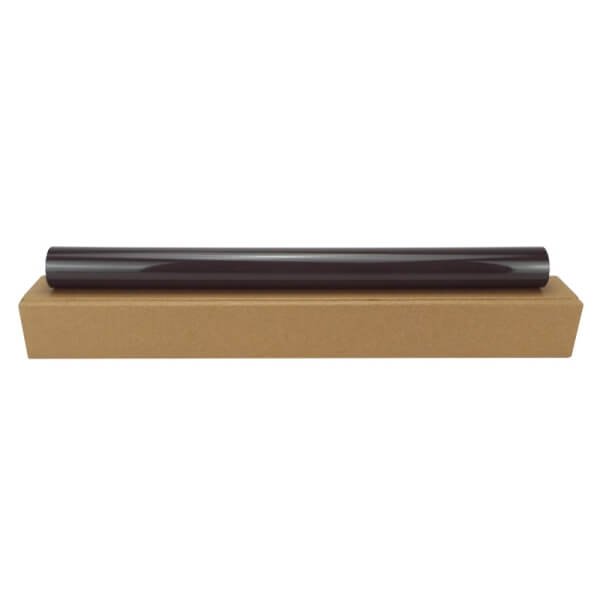
Laser Printer: Working Principle and Maintenance Guide of Fuser Film
1. What is a fuser film?
Fuser film, also known as heating film, has a structure including a base layer, a thermally conductive layer, and an outer coating. This fixing film plays a crucial role in laser printers. Through its unique structure and function, it can effectively dissolve the toner particles into paper fibers, ensuring printing quality and efficiency.
2. How the fuser film works?
Fuser film, is its working principle lies in its unique structure and function. In laser printers, fixing film plays a crucial role. Through the synergistic effect of its base layer, thermally conductive layer and surface coating, the fixing film can effectively dissolve the toner particles into the paper fibers, thereby ensuring printing quality and efficiency.
3. What is the function of the fuser film?
The core task of fuser film sleeve is to efficiently dissolve and fix the toner particles on the printing paper, thereby ensuring that the printer can complete the printing and imaging process smoothly. As an indispensable component of laser printers, the quality of the fixing film is directly related to the number of prints, imaging quality, and compatibility of the printer, that is, whether it can be applied to different types of special papers.
4. Technical challenges and market value
Fixing film, a component with high technical content and high profit margin among printing consumables and accessories, has become a hot product in the market and is also a technical fortress that manufacturers are competing to conquer. Among them, thermal conductivity is the core technical indicator in the production process of fixing film, and its level directly determines the quality and performance of the fixing film. Therefore, pursuing higher thermal conductivity has become a key task in fixing film production.
5. The correlation between performance and lifespan
Through a large number of experiments, the thermal conductivity of the fixing film has a significant impact on service life. When the thermal conductivity is lower than K=1.8, the durability of the fuser film sleeve will be significantly reduced. In addition to human operation factors, the performance of the fixing film itself is the key to determining its service life. The length of service life is directly related to the cost of printing a single page.
6. Tips for using fuser film
When using a fixing film, several key points need to be paid attention to to ensure that its performance and lifespan are maximized.
First, it is necessary to ensure that the thermal conductivity of the fuser film meets the standard, as this is directly related to its durability. When the thermal conductivity is lower than K=1.8, the durability of the fixing film will be seriously affected.
Secondly, in addition to human operation factors, the performance of the fixing film itself is the key to its service life. Therefore, it is crucial to choose a high-quality fixing film. In addition, reasonable control of printing parameters and paper types can also effectively extend the service life of the fixing film.
7. The possible reasons for the fusing film breakage are as follows:
1) Natural wear after large printing volume.
2) Foreign objects are mixed into the printing assembly, resulting in damage and paper jams. Sharp objects may be used when picking up the paper (such as tweezers, pens, pliers, knives, etc., or hard pulling).
3) The pressure of the fixing component is uneven, causing the film to be squeezed in one direction or two directions (commonly when the roller sleeve under fixing is worn, resulting in inconsistent installation tightness of the component).
4) The fixing film has uneven thickness or cracks at one end, which can easily crack when pulled.
5) The inside of the fixing film is too dry and not smooth enough, and is hindered when rotating.
8. Ghosting and paper jam issues occurred when printing:
This may be due to the excessive thickness of the fuser film or the poor manufacturing raw materials, which leads to insufficient thermal conductivity. At the same time, the high melting point of the powder will also affect its complete melting. In addition, insufficient heat generated by aging of the heating sheet and not smooth enough inner surface of the fixing film may cause such problems. In addition, wear of the lower roller (especially wear of the middle part of the lower roller) can also cause wrinkles in the middle of the fixing film, which will cause heavy shadows and paper jams.

Leave A Comment